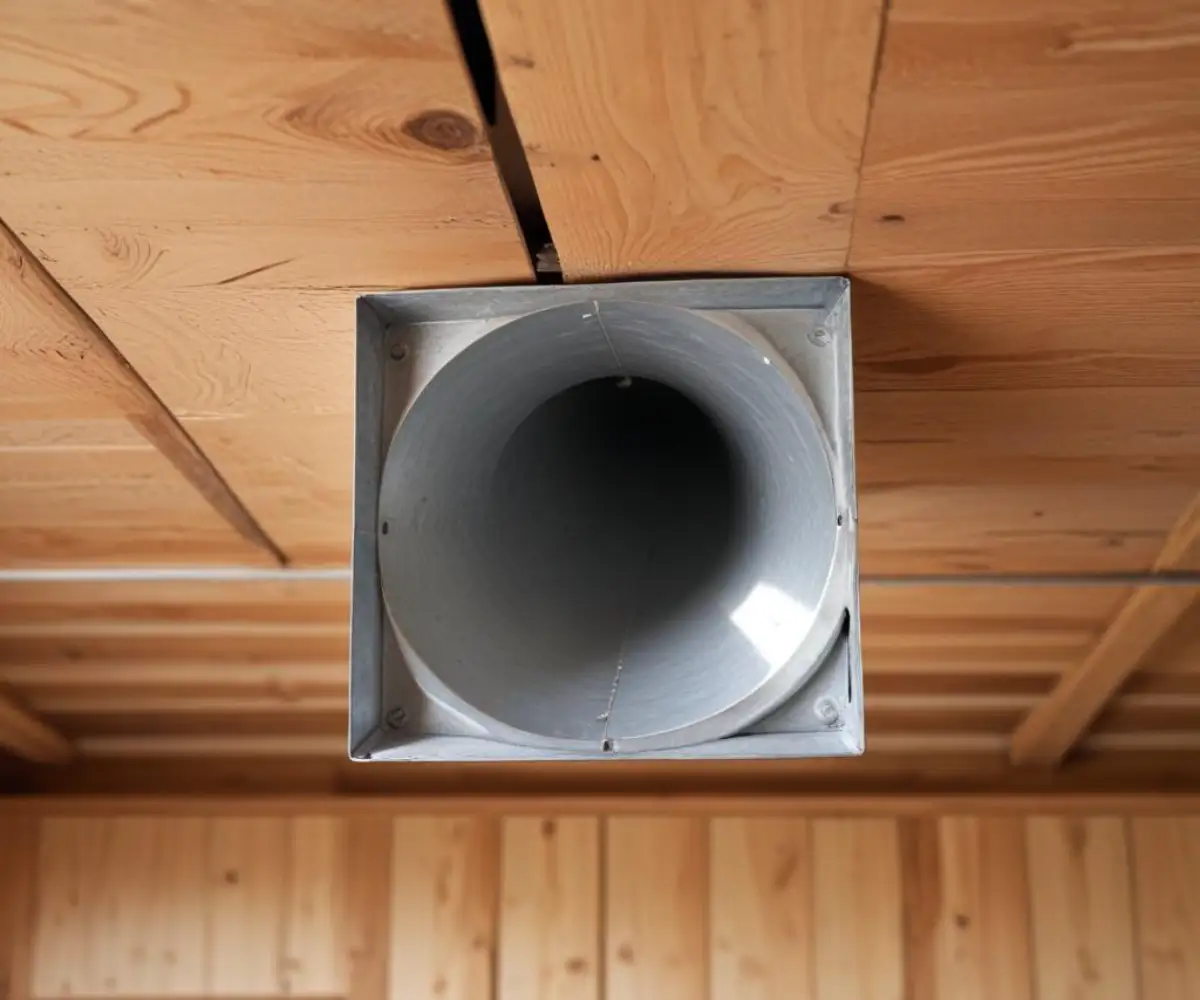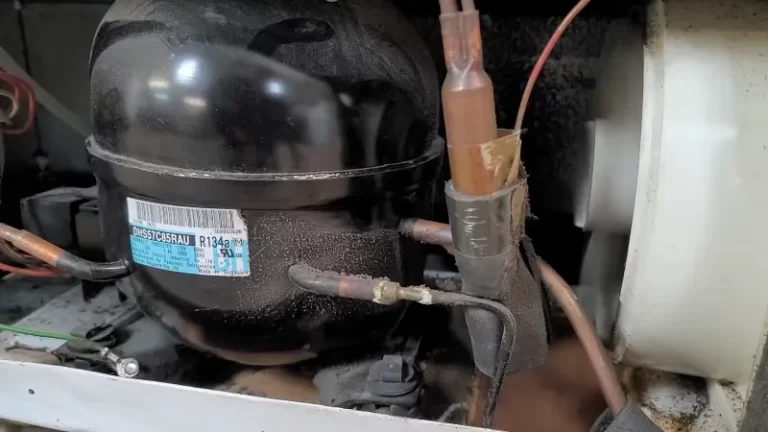Add Vent to Round Duct: Your Ultimate Guide to a Balanced Home
Is there a room in your house that’s always too hot in the summer and freezing in the winter? This common problem of hot and cold spots often points to an imbalance in the home’s HVAC system. Many homeowners correctly diagnose the issue: a lack of proper airflow.
The logical solution seems simple enough—add a new vent to deliver conditioned air where it’s needed most. While this is an achievable DIY project, cutting into your home’s circulatory system, especially a round duct, requires careful planning and precise execution to avoid making the problem worse.
You'll Learn About
Before You Cut: The Critical Planning Phase
Tapping into your existing ductwork without proper forethought can lead to significant issues. An undersized system can be strained, airflow to other rooms can be diminished, and energy efficiency can plummet. Before a single tool is picked up, it’s essential to evaluate the entire HVAC system.
Can Your HVAC System Handle Another Vent?
The most crucial question is whether your furnace and air conditioner can support another vent. Every HVAC system is designed to handle a specific capacity, measured in BTUs (British Thermal Units) for heating/cooling power and CFM (Cubic Feet per Minute) for airflow. Adding a vent increases the demand on the system.
If your system is already at its maximum output, adding another vent will dilute the airflow across the entire house. This means every room, including the new one, may receive inadequate heating and cooling. An overloaded system works harder, leading to increased energy bills and premature wear and tear on expensive components. A professional load calculation is the most accurate way to determine if your system has the spare capacity for expansion.
Understanding Airflow and Static Pressure
Think of your ductwork as a system of arteries and your blower motor as the heart. Static pressure is the resistance to airflow within that system. Adding a new vent is like adding a new artery; it changes the pressure dynamics. Without proper planning, you can inadvertently starve other parts of your home of necessary airflow.
It is generally better to tap into the main trunk line—the large duct that originates at the furnace—rather than a smaller branch line that already services another room. Tapping into a branch line will split the air intended for one room, often leaving both the original room and the new room uncomfortable. When planning the installation, ensure the new duct run is as short and straight as possible, as long runs and sharp bends increase static pressure and reduce airflow.
Supply vs. Return Air: The Balancing Act
A balanced HVAC system requires roughly equal amounts of air to be supplied to and returned from each space. Adding a new supply vent pushes more air into a room, pressurizing it. Without a path for that air to return to the furnace, you can create drafts, noisy vents, and other comfort issues.
For a single new vent, an adequate gap under a doorway might provide a sufficient return path. However, for larger additions or significant changes, you may need to consider where the nearest return vent is located. An imbalance between supply and return air is a common cause of inefficient systems. For more detailed guidance, understanding swamp cooler vents can provide critical insights into maintaining this balance.
Tools and Materials for the Job
Having the right equipment is essential for a clean, safe, and effective installation. Attempting this project with the wrong tools can result in damaged ducts, poor seals, and personal injury. Below is a comprehensive list of what you’ll need.
| Category | Item | Purpose |
|---|---|---|
| Tools | Drill with Step Bit or Unibit | To create a pilot hole for cutting. |
| Aviation Snips (Tin Snips) | For cutting the hole in the round metal duct. | |
| Sheet Metal Crimper | To crimp the end of the new duct for a snug fit. | |
| Screwdriver or Impact Driver | For securing components with sheet metal screws. | |
| Measuring Tape & Marker | For accurate marking and placement. | |
| Safety Glasses & Gloves | To protect against sharp metal edges and debris. | |
| Materials | Round Duct Take-Off Collar | The fitting that connects the new duct to the main trunk. |
| Ductwork (Rigid or Flexible) | To create the new air channel. Size should match the collar. | |
| Register Boot | Connects the ductwork to the vent cover in the wall/floor. | |
| Register/Vent Cover | The visible grille that distributes air into the room. | |
| Sheet Metal Screws | For fastening all metal connections. | |
| Duct Mastic or Foil Tape | To seal all joints and prevent air leaks. This is critical. | |
| Balancing Damper (Highly Recommended) | Allows you to fine-tune airflow to the new vent. |
Step-by-Step: How to Add a Vent to a Round Duct
With your planning complete and materials gathered, you can proceed with the installation. Follow these steps carefully for a professional-quality result that enhances your home’s comfort.
Step 1: Safety First
Begin by turning off all power to your HVAC system at the circuit breaker. This prevents the system from accidentally turning on while you are working. Always wear heavy-duty gloves and safety glasses, as newly cut sheet metal is extremely sharp.
Step 2: Mark Your Location
Choose the precise spot on the main round duct where you will install the new vent. Place your take-off collar against the duct and use a permanent marker to trace the outline of the inner circle. This will be your cutting guide. Ensure the location is accessible and allows a direct path for the new duct run.

Step 3: Cut the Opening in the Duct
Drill a pilot hole just inside your traced circle using a drill and a step bit. This hole will be the entry point for your tin snips. Using the snips, carefully cut along the marked line until the entire circle is removed. Take your time to make the cut as clean as possible for a better seal. Avoid using a saw that creates sparks or can damage the ductwork.
Step 4: Install the Take-Off Collar
A take-off collar is designed with tabs or a flange to secure it to the main duct. For tabbed (dovetail) collars, bend every third or fourth tab outward. Insert the collar into the hole so the bent tabs rest on the outside of the main duct. Reach inside the duct and bend the remaining tabs flat against the interior wall to lock the collar in place. For flanged collars, insert the collar and secure it to the main duct with sheet metal screws through the pre-drilled holes in the flange.
Step 5: Seal the Connection Thoroughly
This is arguably the most important step for system efficiency. Every joint in your ductwork is a potential air leak. Apply a generous layer of duct mastic sealant around the entire base of the take-off collar where it meets the main duct. Alternatively, use high-quality foil HVAC tape, ensuring you press it down firmly to create an airtight seal.
Step 6: Install a Damper and Attach the New Duct
Before attaching the new duct, install a balancing damper inside the take-off collar if it’s not already integrated. This small lever allows you to adjust airflow later. Next, attach your new duct run (either rigid or flexible) to the collar. If using rigid pipe, you may need to crimp one end to fit it inside the collar. Secure the connection with at least three sheet metal screws and seal the joint thoroughly with mastic or foil tape.
Step 7: Run Ductwork and Install the Register Boot
Route the new duct to the location of your new vent. Support the duct every few feet with straps to prevent sagging, which can restrict airflow. When running ductwork through walls, special care is needed to avoid damaging structural components. For those complex installations, learning how to properly install ductwork in existing walls is crucial.
Once at the destination, cut the opening for your vent in the floor, wall, or ceiling. Install the register boot, securing it to the surrounding structure. Connect the duct to the boot, again fastening with screws and sealing the connection completely.
Step 8: Final Connections and System Test
Attach the decorative register cover to the boot. With all connections secured and sealed, you can restore power to the HVAC system. Turn the system on and check the new vent for airflow. It’s also important to check the other vents in your home to ensure they haven’t experienced a significant drop in pressure.
Fine-Tuning Your System for Perfect Comfort
After the installation, your work isn’t quite done. The final step is to balance the airflow. This is where the balancing damper you installed becomes invaluable. If the new vent is blowing too strongly and “stealing” air from other rooms, partially close the damper to restrict its airflow.
The goal is to achieve an even distribution of conditioned air throughout your home. This may require small adjustments over a few days to get it just right. Check each room to ensure it is reaching the desired temperature without creating drafts or hot spots elsewhere. A well-balanced system is the key to both comfort and efficiency.
Common Mistakes and How to Avoid Them
Even with a clear guide, pitfalls exist. Be aware of these common errors to ensure your project is a success.
- Ignoring System Capacity: The most critical error is failing to assess if your HVAC unit can handle the added load. This can lead to poor performance and costly repairs.
- Tapping into a Branch Line: Always try to tap into the main trunk line. Tapping into a smaller branch duct will compromise airflow to two different areas.
- Improper Sealing: Small air leaks in ductwork can add up to significant energy loss. Be meticulous about sealing every single joint and seam with mastic or foil tape.
- Forgetting a Damper: Without a damper, you have no way to control and fine-tune the airflow to the new vent, making system balancing nearly impossible.
Adding a vent to a round duct is a project that can dramatically improve the comfort of your home. By prioritizing careful planning, using the right materials, and following a precise installation process, you can successfully eliminate those frustrating hot and cold spots for good.

